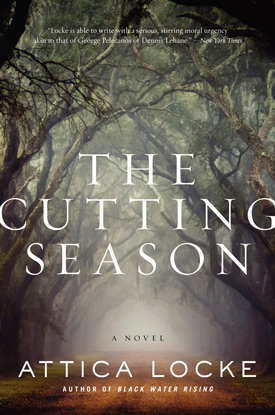One of the scenes that ended up on the cutting room floor involves Albert Cluveau's slow descent into madness after assassinating Ned. Comparing the ebb and flow of a novel to peaks, slopes and valleys, Gaines comments on the footage that did not make it into the film version. He says:
In the film, before it was edited, you see [Cluveau] going mad after he had killed the professor. The actor, Will Hare, who plays the part of Albert Cluveau, does his best acting in the mad scene. But, of course, when the footage went back to Hollywood all this was edited out. So what we get is the assassination and nothing about Cluveau's madness. This assassination is a peak, but the gradual madness is a slope and a valley. And that is what I think is missing in the film. I am not saying that the film is not a good film. But the slopes and valleys are missing. (96-97)Instead, the film shows Cluveau shooting Ned then cuts to Ned's coffin being placed in a hearse. After this, Cluveau does not appear.
However, in the novel, Cluveau's descent occurs over the course of about ten years. During that time, Cluveau's children, and especially his daughter Adeline, suffer.Sleeping in the beds with his daughters, Cluveau hears the "Chariot of Hell" approaching, and the sound of hoofs thundering originate on Adeline's side of the bed. Cluveau interrogates Adeline, asking her if she is pure and why the "Chariot of Hell" comes from her side of the bed. He does not believe her when she says she is pure and that the chariot is a figment of his own imagination and starts to beat her with a strap. As time goes on, Cluveau continues to beat Adeline, and eventually Adeline approaches Miss Jane and asks if she used "hoo-doo" on her father. Miss Jane simply says no but that Cluveau's mind is affecting him. Adeline tells Miss Jane how much she has suffered and even shows Miss Jane the marks on her back. Miss Jane simply responds," I wish I could show you the ones on my heart" (130). As Cluveau's death draws closer, he begins to scream and go mad. People stop by the house just to hear him scream.
The novel and the film show the relationship between Cluveau and Miss Jane. The novel also shows the effects of an oppressive society on Cluveau's daughter. In many ways, she suffers for her father's sin and the society where whites use Cajuns to maintain control over African Americans. This psychological deterioration on women due to racism and slavery is nothing new. Lydia Maria Child spoke about the effects of slavery on white women who never experienced it in her An Appeal in Favor of that Class of Americans Called Africans (1836). More contemporaneous with Gaines, one can look at Gwendolyn Brook's "A Bronzeville Mother Loiters in Mississippi. Meanwhile, A Mississippi Mother Burn Bacon" (1960). To me, this is an important aspect of Gaines' novels that needs to be explored. One needs to only think of Candy in A Gathering of Old Men (1983) to see the effects of racism even on a person who feels she is liberal in her views towards African Americans.
In Tracy Keenan Wynn's screenplay for the film version, he does not include Adeline. He does, however, include the scenes immediately following Ned's assassination. He does include a scene with Bam being interviewed by the sheriff and a sequence showing Cluveau's descent into madness. This sequence differs from the novel, but it still shows the psychological effect that racism and oppression had on Ned's killer. The script maintains the peoples' thoughts that Miss Jane put some "hoo-doo" on Cluveau; however, it differs because it shows Cluveau hallucinating and sleeping with a gun. At one point, "He fell out of bed onto the floor, grabbed his gun and SHOT a hole right through the board wall of his shack." Another night, he ran out into the yard screaming and covering his ears. That's how they found him, dead in the yard, "all awkward and distorted." What the script shows is that Cluveau experienced a breakdown after killing Ned, even though he tells Jane earlier he has killed numerous times. What makes Ned different? Why does he go mad? I would argue that the pressure of the system he lives within catches up to him. He is, as stated in earlier blogs, underneath the white landowners and above the blacks. He must adhere to pleasing the whites even though he is friends with Miss Jane. Below you will see the pages from the screenplay that deal with Cluveau's descent into madness.
What other differences occur between the film version and the novel? Which one(s) would you like me to discuss? Leave a comment below.
Gaines, Ernest J. The Autobiography of Miss Jane Pittman. New York: Bantam Books, 1972. Print.
Rowell, Charles. "This Louisiana Thing That Drives Me: An Interview with Ernest J. Gaines." Conversations with Ernest Gaines. Ed. John Lowe. Jackson: University of Mississippi Press, 1995. 86-98. Print.











